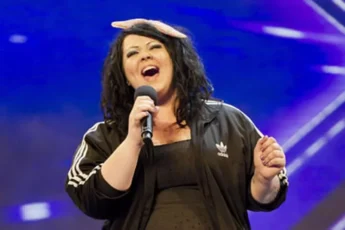Liam Payne’s appearance on The X Factor in 2010 was not his first attempt to find stardom. Two years prior, as a nervous 14-year-old, he had impressed the judges enough to reach the final stages—specifically, the Judges’ Houses round in Barbados. However, show creator Simon Cowell ultimately decided that the young hopeful was simply not ready for the intensity of the live competition. This rejection created a compelling backstory for his return; Liam was now a determined 16-year-old, burdened by the memory of his past failure and facing immense pressure to prove that the intervening two years had finally prepared him for the spotlight.
Stepping onto the stage for his second shot, Liam chose to perform the classic ballad, “Cry Me a River,” demonstrating a more mature and confident stage presence. Where his previous attempt had been raw, this performance was controlled, exhibiting a noticeably stronger vocal technique and emotional depth. He delivered the song with an assured tone and impressive range, showcasing exactly the kind of growth the judges had initially told him he needed. The performance was a deliberate, powerful statement: the boy Simon had sent home had returned as a polished, competition-ready singer determined to seize his moment.
The judges’ reaction was overwhelmingly positive this time, recognizing the significant development in his voice and professionalism. They unanimously agreed that Liam had used his time away wisely and was now a genuine contender in the competition. Crucially, this successful audition opened the door to the next stages of the show, ultimately setting the foundation for his massive global success in the years that followed. Liam Payne’s 2010 return became an iconic moment, serving as a powerful lesson that sometimes, the biggest setbacks in a career are merely opportunities to take time, improve, and return stronger than ever.





